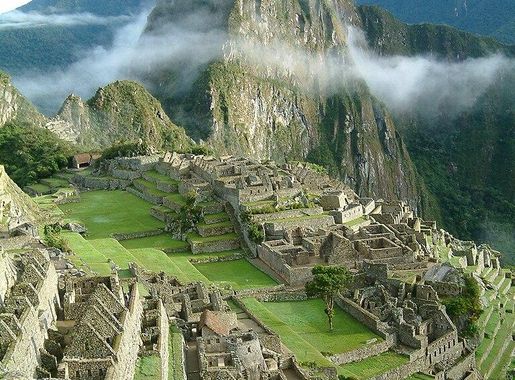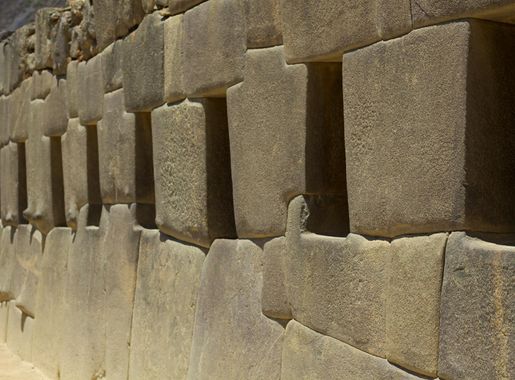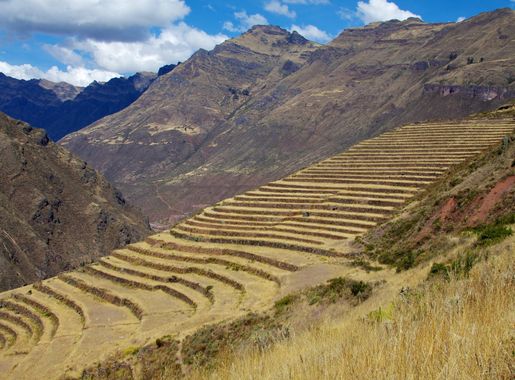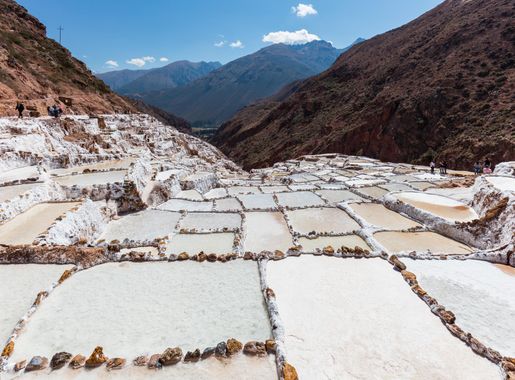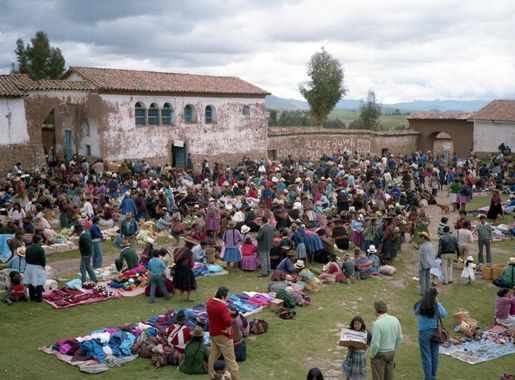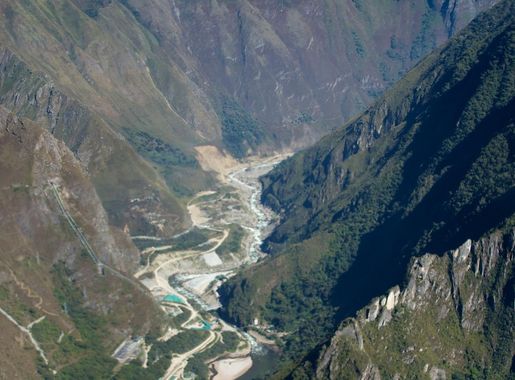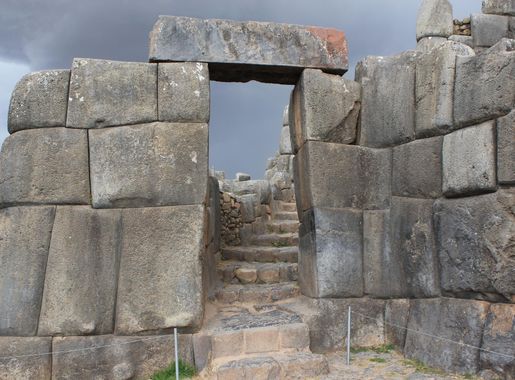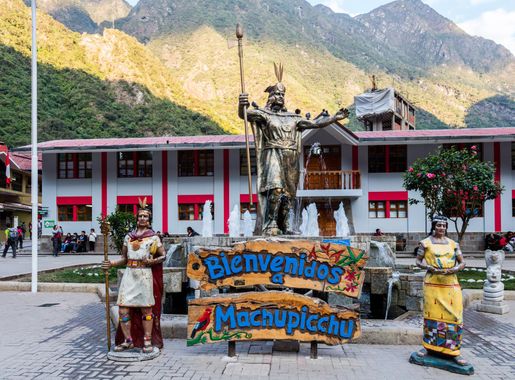
The Enchanting Sacred Valley of Peru
Discover the Sacred Valley of Peru: A blend of ancient Inca heritage, vibrant culture, and breathtaking Andean landscapes.
Nestled between the towering Andean peaks, the Sacred Valley of Peru is a place of breathtaking beauty and rich history. Once the heartland of the Inca Empire, this fertile valley stretches from Pisac to Ollantaytambo, offering visitors a glimpse into the ancient world. The landscape is dotted with terraced fields, traditional villages, and extraordinary archaeological sites that tell the story of a civilization that thrived long before the Spanish conquest. The Sacred Valley is not just about history; it is also about the vibrant culture of the local Quechua people. Markets like the one in Pisac burst with colorful textiles, handmade crafts, and fresh produce, giving travelers a chance to connect with the local way of life. The valley's mild climate and scenic beauty make it perfect for outdoor activities such as hiking, horseback riding, and river rafting, ensuring that every visitor finds something to enjoy. Don't miss the iconic ruins of Ollantaytambo, where massive stone structures reveal the ingenuity of Inca engineering. Another must-visit is the Maras Salt Mines, a collection of thousands of salt pools that have been in use since pre-Inca times. The nearby Moray agricultural terraces are also fascinating, showcasing the Incas' advanced understanding of agriculture. Whether you're a history buff, an adventure seeker, or simply in search of stunning landscapes, the Sacred Valley offers an unforgettable experience.
Local tips in Sacred Valley
- Visit early in the morning to avoid crowds at major archaeological sites.
- Bring cash as many markets and small vendors do not accept credit cards.
- Acclimate to the altitude before engaging in strenuous activities.
- Wear layers as temperatures can vary widely throughout the day.
- Try local delicacies such as choclo (giant corn) and cuy (guinea pig) for an authentic culinary experience.
The Enchanting Sacred Valley of Peru
Nestled between the towering Andean peaks, the Sacred Valley of Peru is a place of breathtaking beauty and rich history. Once the heartland of the Inca Empire, this fertile valley stretches from Pisac to Ollantaytambo, offering visitors a glimpse into the ancient world. The landscape is dotted with terraced fields, traditional villages, and extraordinary archaeological sites that tell the story of a civilization that thrived long before the Spanish conquest. The Sacred Valley is not just about history; it is also about the vibrant culture of the local Quechua people. Markets like the one in Pisac burst with colorful textiles, handmade crafts, and fresh produce, giving travelers a chance to connect with the local way of life. The valley's mild climate and scenic beauty make it perfect for outdoor activities such as hiking, horseback riding, and river rafting, ensuring that every visitor finds something to enjoy. Don't miss the iconic ruins of Ollantaytambo, where massive stone structures reveal the ingenuity of Inca engineering. Another must-visit is the Maras Salt Mines, a collection of thousands of salt pools that have been in use since pre-Inca times. The nearby Moray agricultural terraces are also fascinating, showcasing the Incas' advanced understanding of agriculture. Whether you're a history buff, an adventure seeker, or simply in search of stunning landscapes, the Sacred Valley offers an unforgettable experience.
When is the best time to go to Sacred Valley?
Iconic landmarks you can’t miss
MachuQolqa Viewpoint
Discover breathtaking views and serene landscapes at MachuQolqa Viewpoint in the heart of the Andes, a must-visit destination for all travelers.
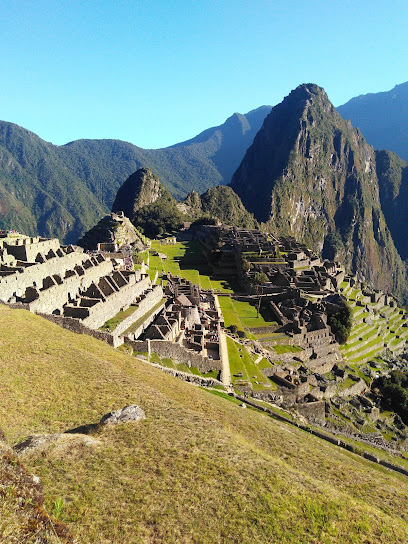
Wat'a, Cusco
Explore Wat'a in Cusco, an archaeological gem showcasing the brilliance of the Inca civilization amidst breathtaking Andean scenery.
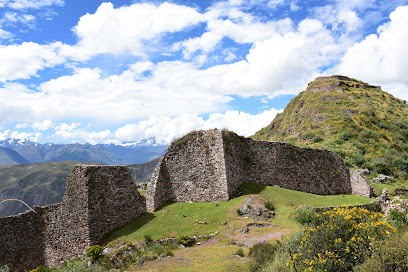
Mirador Del Valle Sagrado
Experience the breathtaking landscapes and cultural richness at Mirador Del Valle Sagrado, your gateway to the stunning Sacred Valley of Peru.

Unmissable attractions to see
Saqsaywaman
Explore Saqsaywaman, an awe-inspiring Incan citadel near Cusco, where history and stunning landscapes come together in a captivating experience.

Qorikancha
Discover the rich history of Qorikancha, the Inca Temple of the Sun, blending spirituality and art in the heart of Cusco.
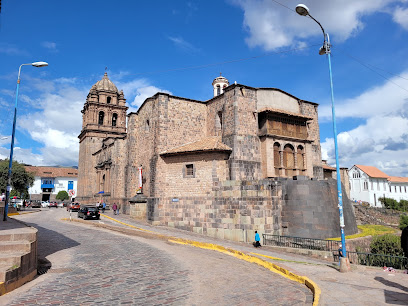
Twelve Angled Stone
Explore Cusco's Twelve Angled Stone, a stunning example of Incan architecture and a highlight of Peru's rich historical heritage.
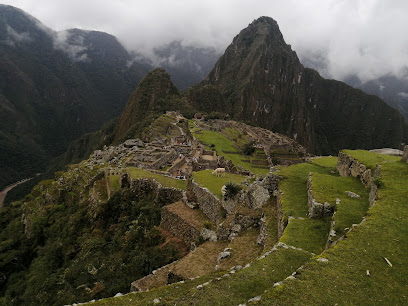
Tambomachay
Explore the ancient Incan site of Tambomachay, known for its stunning aqueducts, waterfalls, and rich cultural heritage near Cusco, Peru.
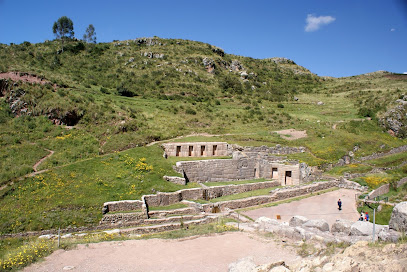
Monumento Inca Pachacutec
Explore the Monumento Inca Pachacutec, a stunning tribute to Inca heritage nestled in the scenic landscapes of Cusco, Peru.
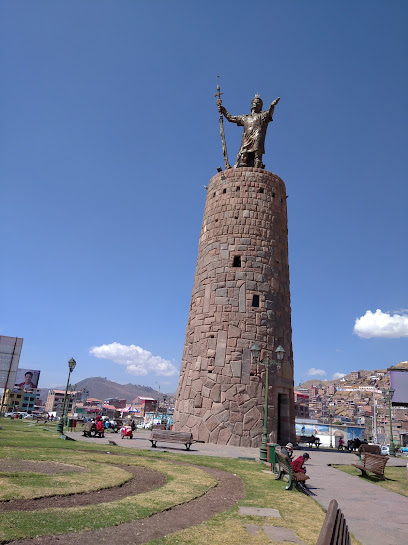
Pikillacta
Discover the ancient wonders of Pikillacta, an archaeological gem showcasing the legacy of the Wari culture amidst stunning Andean landscapes.
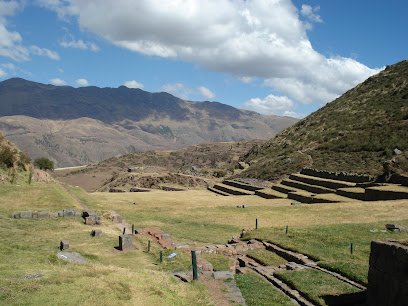
Cochahuasi Animal Sanctuary
Explore Cochahuasi Animal Sanctuary in Cusco, Peru: a wildlife refuge dedicated to animal rescue and conservation amidst stunning Andean landscapes.
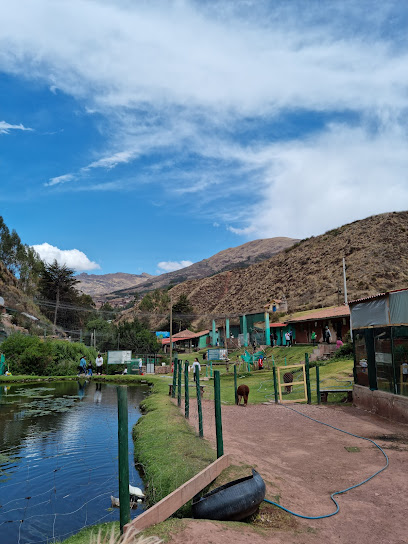
Maras
Experience the breathtaking salt terraces of Maras, a unique blend of nature and culture in Peru's Sacred Valley.
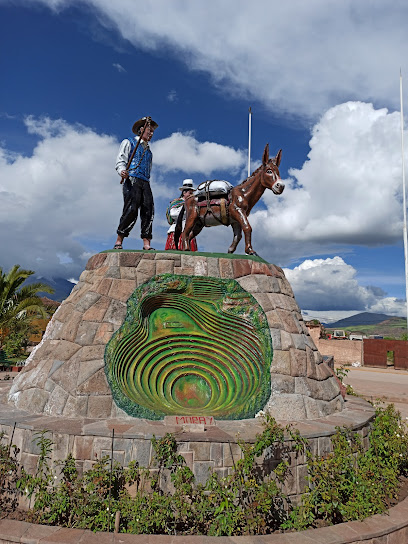
Inka Museum
Explore the rich history of the Inca civilization at the Inka Museum, a captivating journey through Peru's ancient heritage in Cusco.

Morada De Los Dioses
Explore Morada De Los Dioses, a cultural haven in Peru, featuring exquisite handicrafts, stunning sculptures, and authentic Peruvian cuisine.
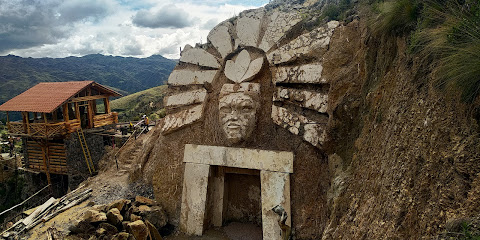
Sapantiana Aqueduct
Explore the stunning Sapantiana Aqueduct in Cusco, a masterpiece of colonial architecture and a serene escape into history amidst breathtaking scenery.
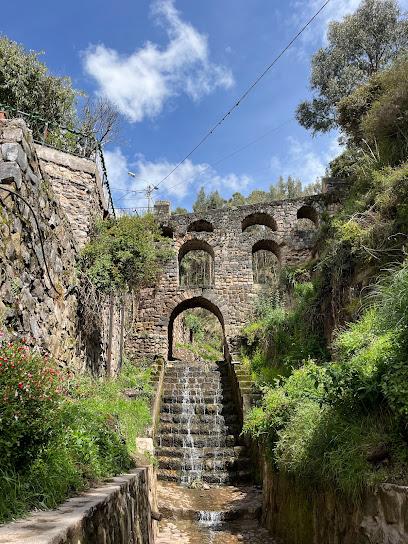
Temple of the Moon
Explore the Temple of the Moon, a sacred Inca site in Cusco, where ancient history and stunning landscapes converge in spiritual harmony.
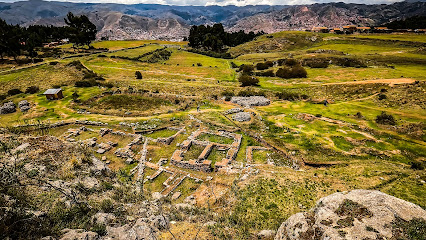
Museo Inkariy
Explore the heart of Andean culture at Museo Inkariy in Calca, Peru, where art, history, and tradition come together beautifully.
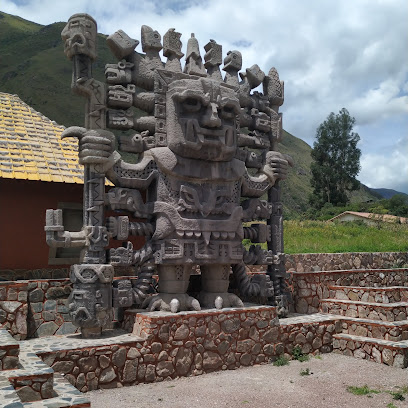
Museo de Arte Precolombino
Explore the fascinating world of pre-Columbian art at the Museo de Arte Precolombino, a must-visit cultural treasure in Cusco.
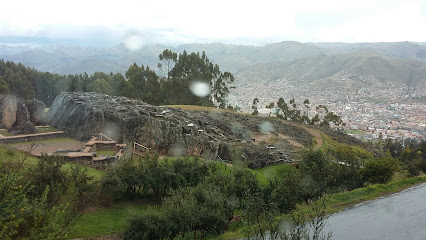
Sitio arqueológico Pinkuylluna
Discover the historic Pinkuylluna Archaeological Site near Ollantaytambo, where ancient Incan ruins meet breathtaking mountain views in Peru.
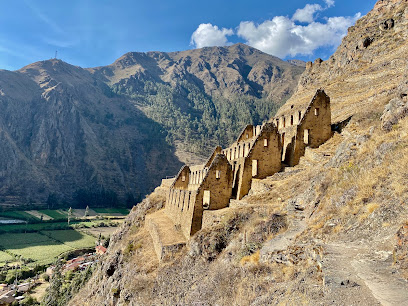
Essential places to dine
Don Angel Inka Casona Restaurant
Experience authentic Peruvian cuisine at Don Angel Inka Casona Restaurant in Maras - where every dish tells a story.
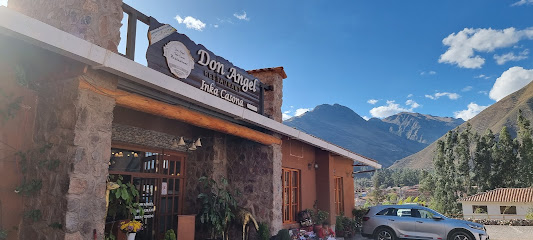
El Huacatay
Discover authentic Peruvian cuisine at El Huacatay in Urubamba - where local flavors and warm hospitality create unforgettable dining experiences.
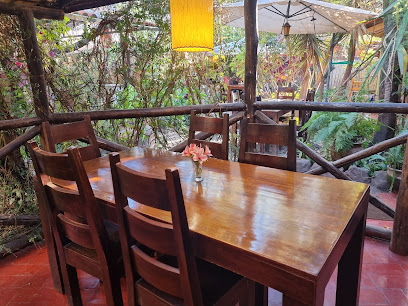
Hacienda Puka Punku Restaurante
Experience authentic Peruvian cuisine at Hacienda Puka Punku in Moccopata – where tradition meets flavor in a charming setting.

El Maizal
Discover the essence of Peruvian gastronomy at El Maizal in Urubamba, where tradition meets flavor amidst breathtaking landscapes.
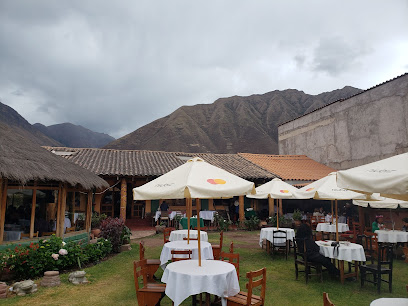
Antojitos Urubamba
Discover authentic Peruvian flavors at Antojitos Urubamba - your go-to spot for pastries and espresso in the heart of Urubamba.
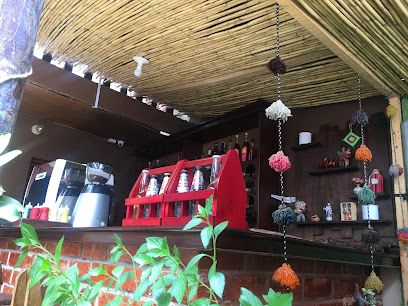
Kampu
Experience authentic Peruvian flavors at Kampu in Urubamba – where local ingredients meet exceptional culinary artistry.
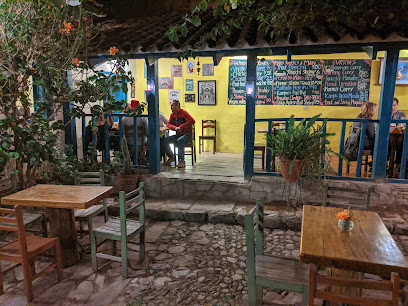
Casa Colonial Restaurante & Bar
Experience authentic Peruvian flavors at Casa Colonial Restaurante & Bar in Urubamba, where culinary tradition meets contemporary charm.
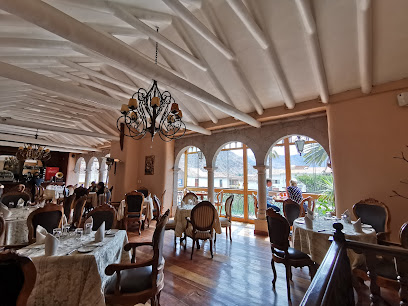
Tierra Cocina Artesanal / Urubamba
Discover authentic Peruvian flavors at Tierra Cocina Artesanal in Urubamba – where culinary artistry meets local tradition.
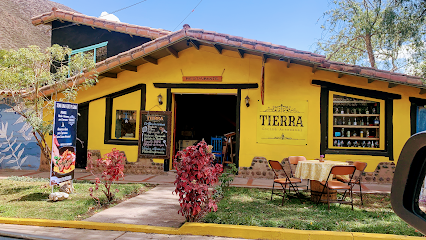
Sol de Mayo
Discover the heart of Peru's culinary scene at Sol de Mayo in Urubamba, where authentic flavors and warm hospitality await every visitor.
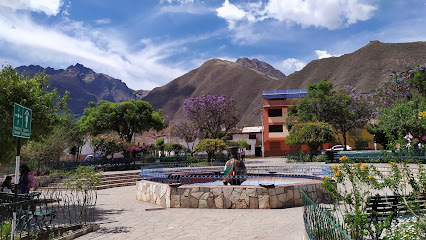
kachi wasi.
Discover authentic Peruvian cuisine at Kachi Wasi in Urubamba - where tradition meets flavor in a cozy setting.
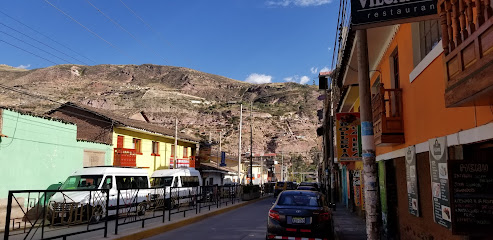
AMA Restaurant Urubamba
Experience authentic Peruvian cuisine at AMA Restaurant Urubamba in the heart of Sacred Valley—where tradition meets taste.

Pakakuna Restaurante
Experience authentic Peruvian flavors at Pakakuna Restaurante in Urubamba - where culinary excellence meets stunning views.
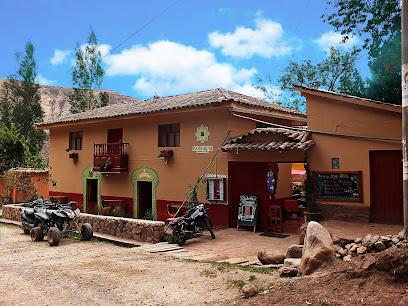
Hatuchay Restaurant Craft Beer & Peruvian Cuisine
Experience authentic Peruvian cuisine paired with exquisite craft beers at Hatuchay Restaurant in the heart of Cusco.
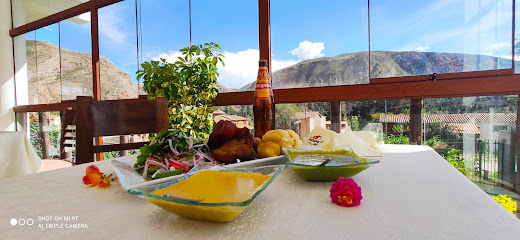
Pizza Wasi
Savor authentic Italian pizza at Pizza Wasi in Urubamba – where every bite tells a story of tradition and flavor.
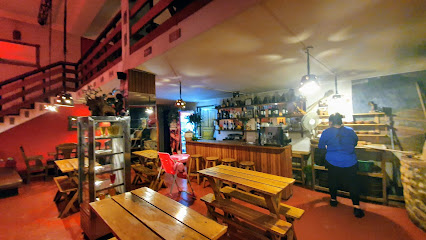
Hacienda Huayoccari
Experience authentic Peruvian cuisine at Hacienda Huayoccari – where tradition meets taste in a stunning setting.
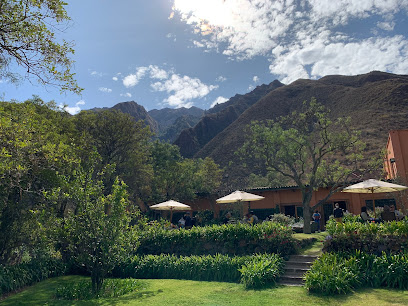
Markets, malls and hidden boutiques
Boutique Jazmin Handicraft store :)
Discover unique Peruvian crafts at Boutique Jazmin Handicraft Store in Urubamba, where tradition meets creativity in every handmade piece.
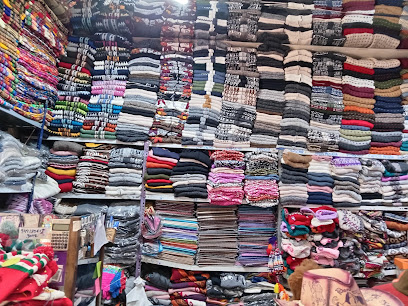
Ayllu
Discover the vibrant culture of Urubamba at Ayllu, where local artisans showcase their exquisite crafts and traditions.
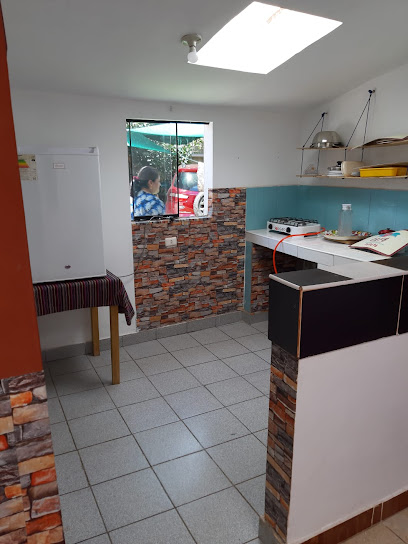
Rainbow Spirit Shop
Explore the Rainbow Spirit Shop in Urubamba for unique Peruvian handicrafts, art, and a vibrant atmosphere that celebrates local culture.
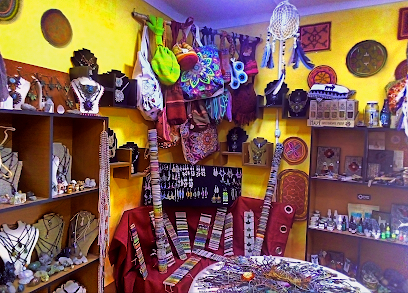
Laura Most | Workshop & Store ~ Yuri Eslava Cerámica
Explore the charm of Urubamba with unique handmade ceramics at Laura Most Workshop & Store, where tradition meets artistic expression.
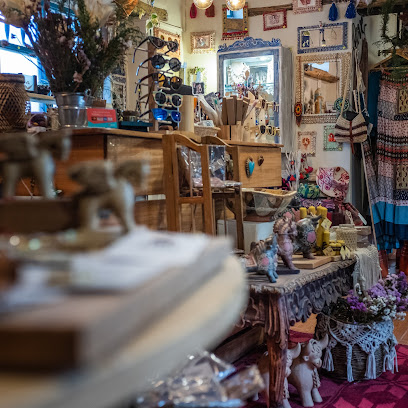
Tique Supermarket
Explore the flavors of Peru at Tique Supermarket in Urubamba, where local produce and unique delicacies await every visitor.
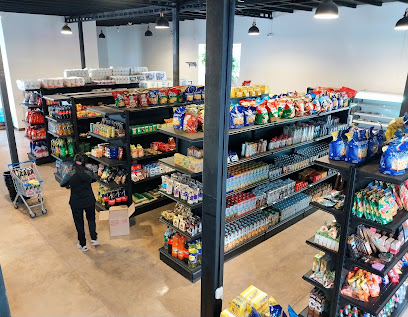
Kumi Shop
Discover Kumi Shop in Urubamba, your destination for organic and vegetarian delights, where healthy eating meets local flavors.
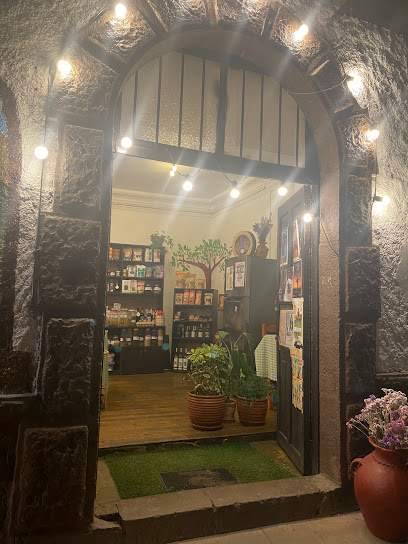
Bazar Cuarto Creciente
Discover unique Peruvian fashion at Bazar Cuarto Creciente in Urubamba, where local craftsmanship meets contemporary style!
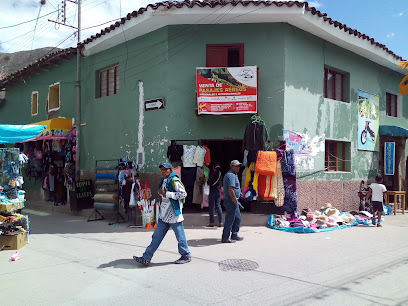
Panorama
Explore the vibrant world of Peruvian fashion at Panorama Clothing Store in Huayllabamba, where tradition meets contemporary style and craftsmanship.

Joyeria Luz Del Carmen Sede Museo Vivo Yucay
Explore the vibrant artisan culture of Urubamba at Joyeria Luz Del Carmen, a shopping mall filled with exquisite handcrafted jewelry and rich traditions.

La Salvaje
Explore La Salvaje in Urubamba for authentic Peruvian crafts and a unique shopping experience that reflects local culture.
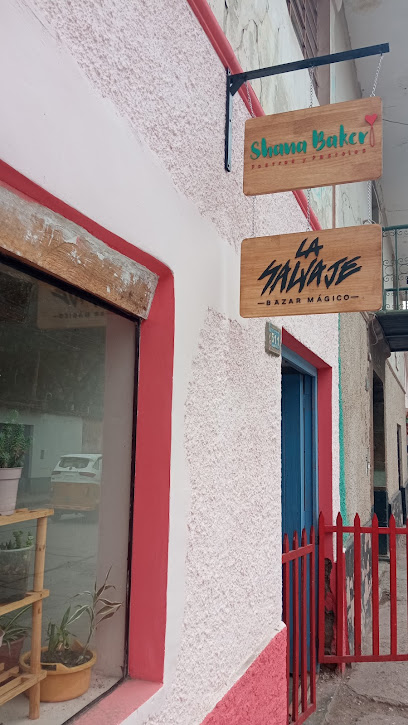
Voy by Millo
Explore the heart of Peruvian culture at Voy by Millo, a boutique in Urubamba featuring artisanal crafts and unique souvenirs.
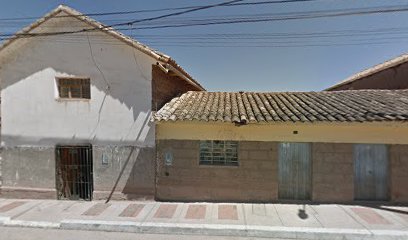
Exclusiva Store Peru
Explore the essence of Peru at Exclusiva Store Peru, where authentic clothing and accessories reflect the rich cultural heritage of the region.

Guzz Alpaca
Discover the vibrant world of Peruvian handicrafts and organic products at Guzz Alpaca in Urubamba, a must-visit for every traveler seeking authenticity.
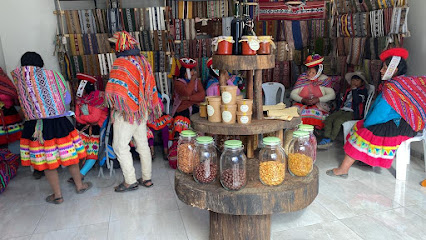
Eventos y Estilos Isanan
Explore Eventos y Estilos Isanan, a charming gift shop in Urubamba offering unique, locally crafted souvenirs and artisan goods that celebrate Peruvian culture.
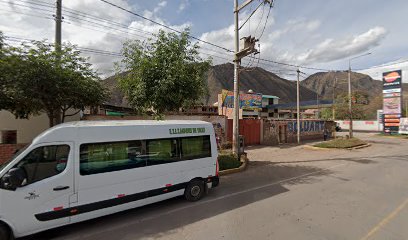
Suñay Wasiyki
Explore Suñay Wasiyki in Urubamba for unique, handcrafted gifts that embody the spirit of the Andes.
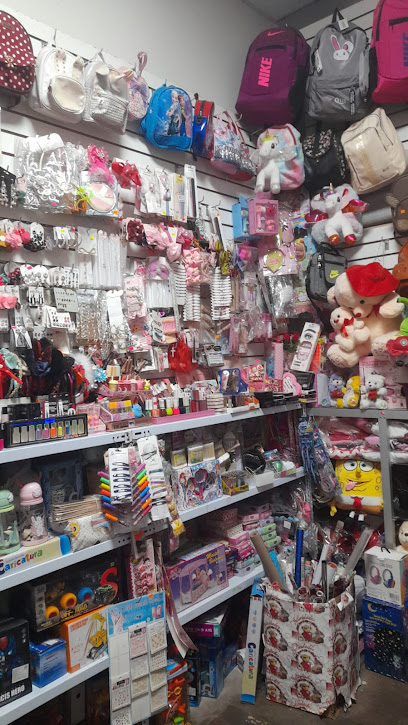
Essential bars & hidden hideouts
Héroes - Café y Bar - Urubamba
Experience the vibrant nightlife of Urubamba at Héroes - Café y Bar, where local flavors and a lively atmosphere await.

Antes de Cristo - TAPROOM
Experience the vibrant atmosphere and local flavors at Antes de Cristo - TAPROOM in the heart of Urubamba, a must-visit bar for tourists.
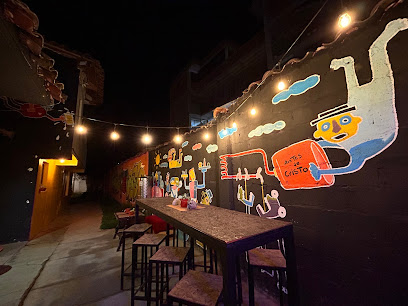
Joya's Restobar
Experience the best of Peruvian cuisine at Joya's Restobar, a delightful gastropub in Urubamba's scenic Sacred Valley.
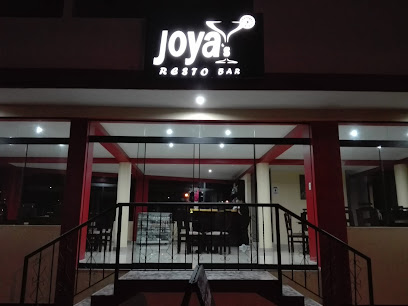
La Yerbatera
Discover La Yerbatera in Urubamba - a lively bar offering exquisite drinks and a welcoming atmosphere for travelers in the Sacred Valley.
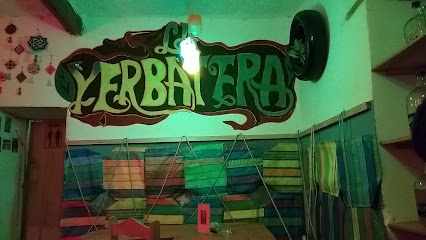
Kiri Bar
Discover the serene ambiance of Kiri Bar in Urubamba, the ideal retreat for travelers seeking relaxation and refreshing drinks in a stunning setting.
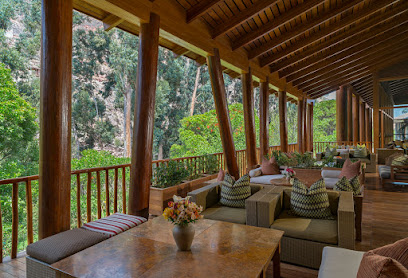
LUCHINCHA RESTO HOUSE BAR
Discover the lively atmosphere and delicious fast food at Luchincha Resto House Bar in Urubamba, the perfect spot for food and fun.
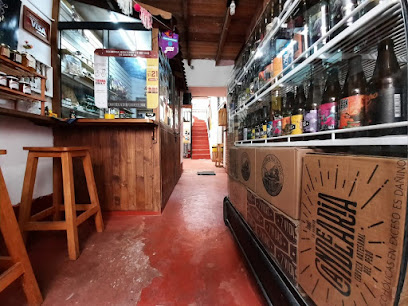
GREEN BAR VALLE SAGRADO
Discover the lively atmosphere of Green Bar Valle Sagrado, where innovative cocktails and local flavors meet stunning views in the heart of Urubamba.
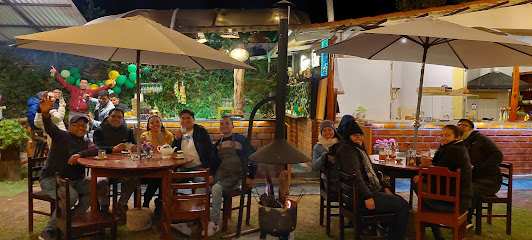
Ukumari Cafe Bar
Discover the vibrant atmosphere of Ukumari Cafe Bar in Urubamba, where local culture and great drinks come together in a cozy setting.
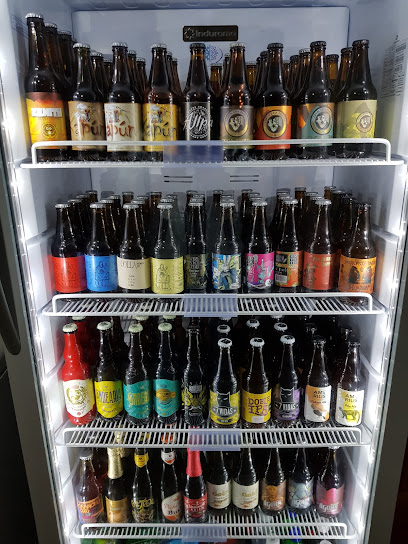
Wayki snack bar
Experience the authentic flavors of Peru at Wayki Snack Bar in Urubamba, where local snacks and refreshments await in a cozy atmosphere.
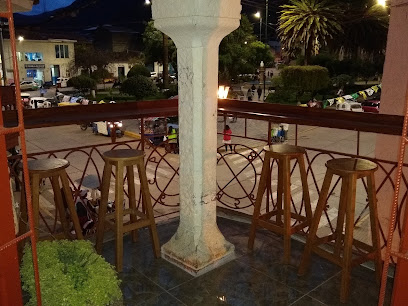
Pukas resto bar
Discover the vibrant flavors of Pukas Resto Bar in Urubamba, where authentic grill dishes meet a lively atmosphere perfect for every traveler.
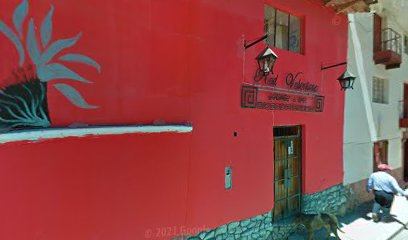
el te piteado
Discover El Te Piteado, a local bar in Urubamba offering authentic Peruvian drinks and a vibrant atmosphere for an unforgettable experience.
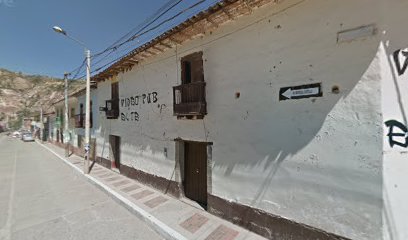
Chicheria Beer Tasting
Discover the essence of Peru's brewing tradition at Chicheria Beer Tasting, where every sip tells a story of local craftsmanship.
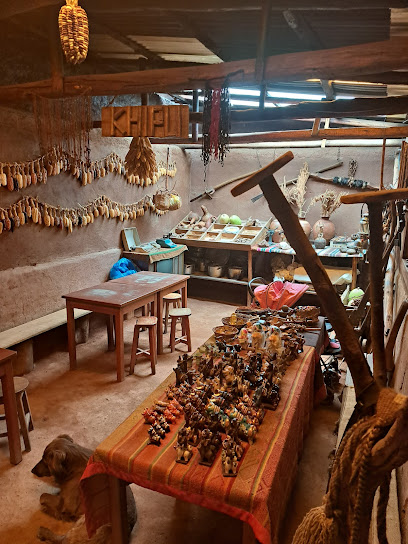
Saqras Resto Bar Urubamba
Experience the vibrant atmosphere and authentic Peruvian flavors at Saqras Resto Bar in the heart of Urubamba, a perfect spot for relaxation after your adventures.

TAIPÁ RESTOBAR
Experience the essence of Peru at Taipá Restobar, where traditional flavors meet modern gastronomy in the heart of Urubamba.
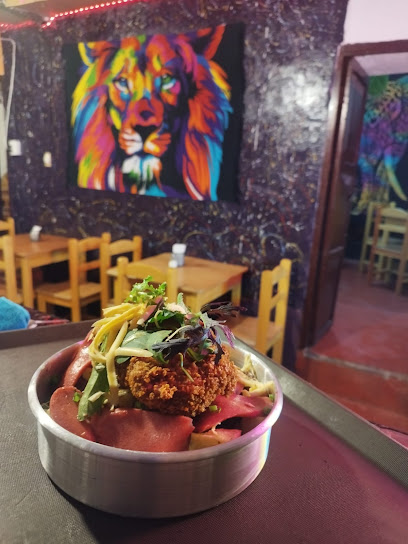
Tinkuuy Restobar
Discover the taste of Peru at Tinkuuy Restobar, where authentic flavors meet a vibrant atmosphere in the heart of Urubamba.
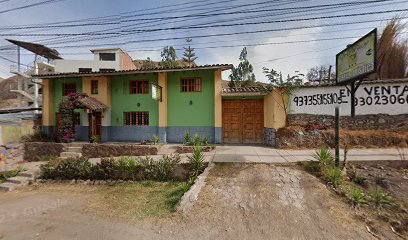
Local Phrases about Sacred Valley
-
- HelloQanmi
[kan-mee] - GoodbyeAmarpay
[am-ar-pie] - YesArí
[ah-ree] - NoMan
[mahn] - Please/You're welcomeSumaq kausay
[soo-mahk cow-sigh] - Thank youSulpayki
[sull-pie-kee] - Excuse me/SorryDispensay
[dees-pen-sigh] - How are you?Imaynalla?
[ee-mine-ya-ya] - Fine. And you?Allillanchu. Chaypi?
[al-lee-yahn-choo. chai-pee] - Do you speak English?Inglispaykichis?
[ing-lees-pie-keech-ees] - I don't understandMana riqsisqa
[mahn-ah reek-sees-ka]
- HelloQanmi
-
- I'd like to see the menu, pleaseMenuyta qarqanki, ari
[meh-noo-y-tah kar-kahn-kee, ah-ree] - I don't eat meatKarnirqa mana ñuqchisqa
[kar-nee-rr-ka mahn-ah nyook-chees-ka] - Cheers!Qhali!
[ka-lee] - I would like to pay, pleaseQallariki, ari
[kal-lar-kee, ah-ree]
- I'd like to see the menu, pleaseMenuyta qarqanki, ari
-
- Help!Yanapani!
[yah-nah-pah-nee] - Go away!Imaynalla!
[ee-mine-ya-ya] - Call the Police!Policiakamuyta chaskiy
[poh-lee-see-ah-kah-mooi-tah chahs-kee] - Call a doctor!Unaypaq wawqi kani!
[oo-nigh-pahk wahk-kee kah-nee] - I'm lostTupanichu
[too-pah-neech-oo] - I'm illSonqoyki
[sohn-koi-kee]
- Help!Yanapani!
-
- I'd like to buy...Anchanchu kay...
[an-chan-choo kai...] - I'm just lookingÑanmiy
[nyahn-mee] - How much is it?Imaynallataq?
[ee-mine-yahl-lah-tahk] - That's too expensiveTuta chakrakuy
[too-tah chak-rah-kooi] - Can you lower the price?Qaliy tukuyta munayki?
[ka-lee took-ooi-tah moo-nigh-kee]
- I'd like to buy...Anchanchu kay...
-
- What time is it?Imaynallataq?
[ee-mine-yahl-lah-tahk] - It's one o'clockJusk'a
[hoos-kah] - Half past (10)Iskay p'unchaw
[ees-kai poon-chow] - MorningÑawpa
[nyow-pah] - AfternoonInti ch'aska
[een-tee chah-skah] - EveningTuta ch'aska
[too-tah chah-skah] - YesterdayHuk p'unchaw
[hook poon-chow] - TodayKunan
[koo-nahn] - TomorrowKay p'unchaw
[kai poon-chow] - 1Huk
[hook] - 2Iskay
[ees-kai] - 3Kimsa
[keem-sah] - 4Tawa
[tah-wah] - 5Pichqa
[peech-kah] - 6Suqta
[sook-tah] - 7Qanchis
[kahn-chees] - 8Pusaq
[pooh-sahk] - 9Isqun
[ees-koon] - 10Chunka
[choon-kah]
- What time is it?Imaynallataq?
-
- Where's a/the...?Maynataq...
[mine-yahl-lah-tahk] - What's the address?Imaynallatam rikch'ay?
[ee-mine-yahl-lah-tahm reek-chai] - Can you show me (on the map)?Mapachayki?
[mah-pah-chai-kee] - When's the next (bus)?Pisqa willayta?
[pees-kah wee-lie-tah] - A ticket (to ....)Tikiti (....paq)
[tee-kee-tee (....pahk)]
- Where's a/the...?Maynataq...
History of Sacred Valley
-
The Sacred Valley, or 'Valle Sagrado,' is located in the Andean highlands of Peru. This region was once the heart of the Inca Empire, selected for its fertile lands and strategic location. The valley stretches from Pisac to Ollantaytambo, following the Urubamba River. The Incas recognized the valley's agricultural potential and developed advanced farming techniques, including terracing and irrigation, to make the most of the land.
-
Pisac is one of the most significant archaeological sites in the Sacred Valley. Built by the Incas around the 15th century, Pisac served both as a strategic military citadel and a religious center. The site's impressive agricultural terraces, which are still in use today, showcase the Inca's advanced understanding of agricultural engineering. Pisac also features a bustling traditional market that has been a focal point for trade and culture for centuries.
-
Ollantaytambo is unique in that it is one of the few places where the Incas achieved a significant military victory against the Spanish conquistadors. The town itself is a living museum, with original Inca urban planning still visible in its streets. The fortress of Ollantaytambo, with its massive stone terraces and temple complex, served as a stronghold for Manco Inca Yupanqui during the Spanish conquest. Today, Ollantaytambo remains a vibrant community, with its indigenous inhabitants preserving many traditional practices.
-
The Sacred Valley is intrinsically linked to the world-famous Inca Trail, a network of trails that connected various parts of the Inca Empire. The trail culminates at Machu Picchu, the iconic Inca citadel rediscovered in 1911 by Hiram Bingham. The Inca Trail passes through several significant archaeological sites within the Sacred Valley, including Wiñay Wayna, known for its dramatic terraces and ceremonial baths. This connection underscores the Sacred Valley's importance as a cultural and religious hub for the Incas.
-
Moray is an archaeological site in the Sacred Valley that consists of several terraced circular depressions. These terraces were used by the Incas as an agricultural laboratory to experiment with different crops and microclimates. The unique design of Moray allowed the Incas to simulate various environmental conditions, enabling them to cultivate a wide variety of crops at different altitudes. This ingenuity highlights the Incas' sophisticated agricultural techniques and their ability to adapt to diverse ecosystems.
-
The Salinas de Maras are a series of salt pans nestled in the Sacred Valley, which have been in operation since pre-Inca times. These salt mines consist of thousands of small pools fed by a subterranean saltwater spring. The process of salt extraction involves evaporating the water and collecting the crystallized salt, a technique passed down through generations. The salt from Maras was a valuable commodity for the Incas and continues to be harvested today, providing a unique glimpse into the region's enduring cultural practices.
Sacred Valley Essentials
-
Sacred Valley is located in the Andean region of Peru, near the city of Cusco. The nearest international airport is Alejandro Velasco Astete International Airport in Cusco. From Cusco, you can take a taxi, private car, or a bus to reach the Sacred Valley. The journey typically takes around 1 to 2 hours depending on your exact destination within the valley. There are also tour operators offering organized trips to the Sacred Valley.
-
Within the Sacred Valley, you can use a variety of transportation options. Taxis and private cars are readily available and can be hired for day trips. Buses and minibuses (known locally as 'colectivos') operate between the main towns and villages, offering a budget-friendly way to travel. For a more authentic experience, consider using the local 'mototaxi' services for short distances.
-
The official currency in Peru is the Peruvian Sol (PEN). Credit cards are accepted in most hotels, restaurants, and larger shops, but it is advisable to carry cash, especially in smaller establishments and rural areas. ATMs are available in towns like Ollantaytambo and Urubamba, but it is wise to withdraw sufficient cash in Cusco before traveling to more remote areas in the valley.
-
The Sacred Valley is generally a safe destination for tourists, but it is important to take standard precautions. Avoid walking alone at night in unfamiliar areas and keep an eye on your belongings in crowded places. Be cautious in markets and tourist spots where pickpocketing can occur. There are no specific high-crime areas targeting tourists, but staying vigilant is always recommended.
-
In case of emergency, dial 105 for police assistance and 116 for medical emergencies. Major towns like Urubamba and Ollantaytambo have local police stations and medical facilities. It is highly recommended to have travel insurance that covers medical emergencies. Pharmacies are available in the main towns for minor health issues.
-
Fashion: Do dress in layers, as the weather can change rapidly. Avoid wearing overly revealing clothing, especially when visiting religious sites. Religion: Do respect local customs and traditions. Always be mindful and quiet when visiting churches or sacred sites. Public Transport: Do be respectful and give up your seat to elderly passengers. Don't eat or drink on public transport. Greetings: Do greet people with a polite 'Buenos días' or 'Buenas tardes.' A handshake is also customary. Eating & Drinking: Do try local delicacies like 'cuy' (guinea pig) and 'chicha' (a traditional corn beer). Don’t refuse food offerings as it is considered impolite.
-
To experience the Sacred Valley like a local, visit the local markets where you can purchase fresh produce and traditional Peruvian goods. Engage with locals, who are often friendly and willing to share their knowledge of the area’s history and culture. Don't miss visiting the local Chicherias to try traditional corn beer. For an unforgettable experience, consider participating in a traditional Andean ceremony or ritual.
Nearby Cities to Sacred Valley
-
Things To Do in Machu Picchu
-
Things To Do in Ayacucho
-
Things To Do in Arequipa
-
Things To Do in Puno
-
Things To Do in Huancayo
-
Things To Do in Ica
-
Things To Do in Copacabana
-
Things To Do in La Paz
-
Things To Do in Tacna
-
Things To Do in Lima
-
Things To Do in Arica
-
Things To Do in Huaraz
-
Things To Do in Cochabamba
-
Things To Do in Iquique
-
Things To Do in Trujillo

